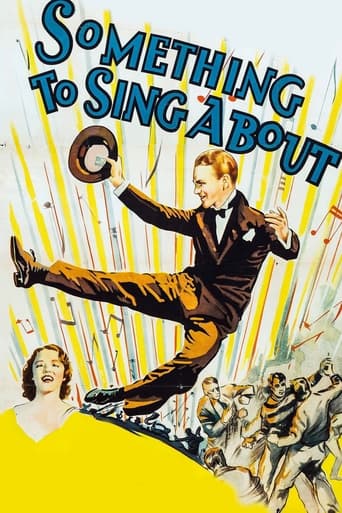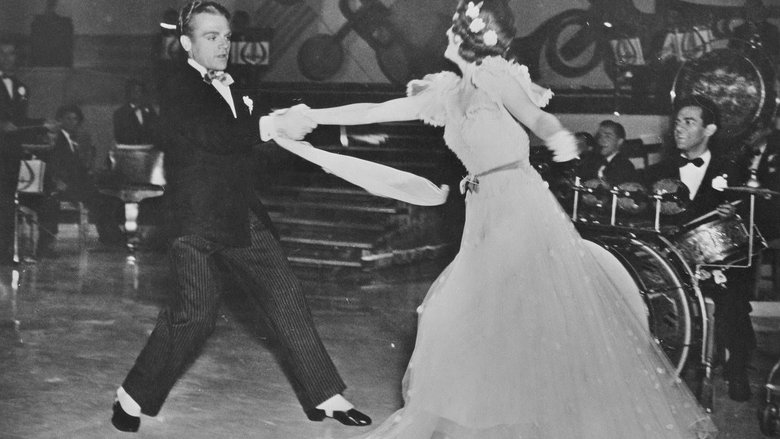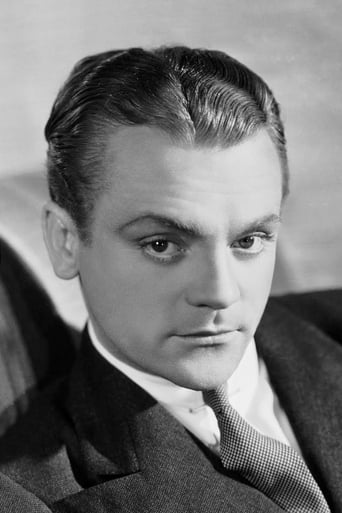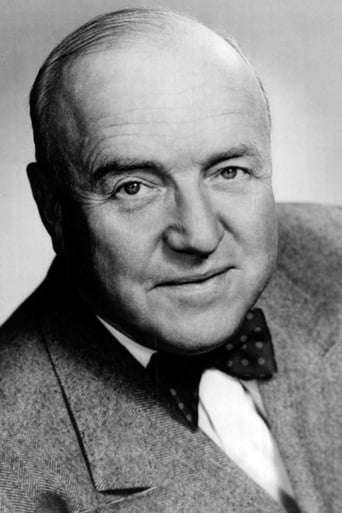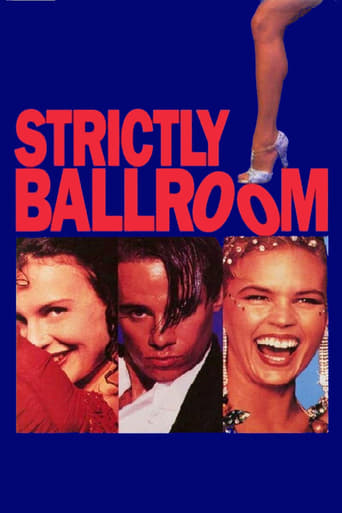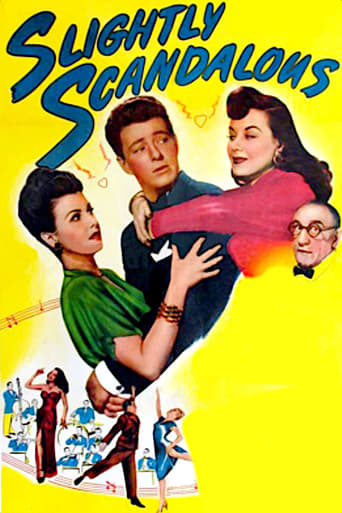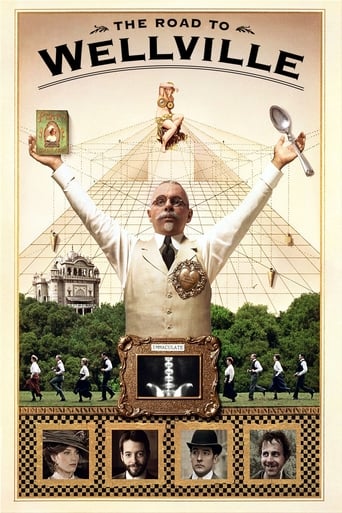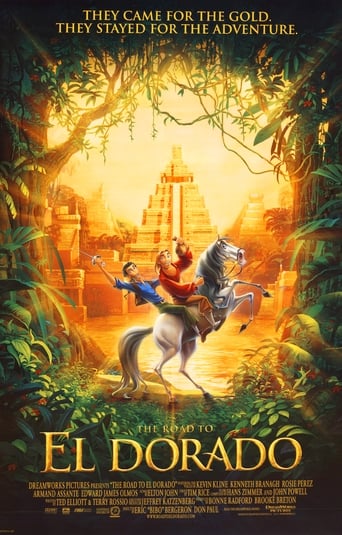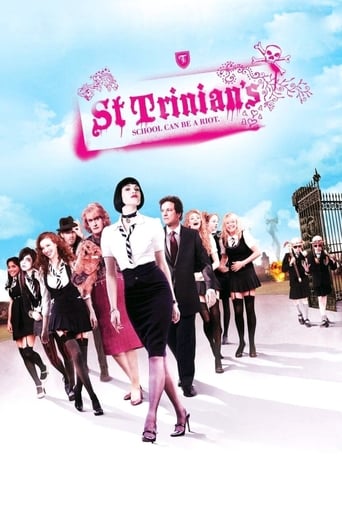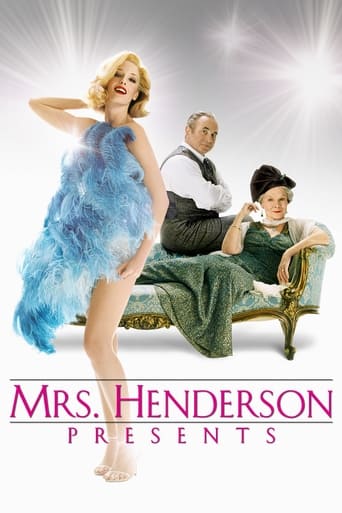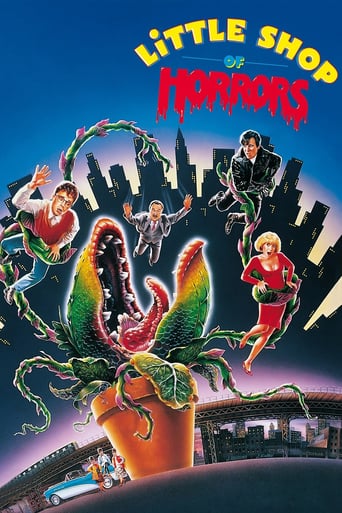Something to Sing About (1937)
James Cagney has a rare chance to show his song-and-dance-man roots in this low-budget tale of a New York bandleader struggling with a Hollywood studio boss.
Watch Trailer
Cast


Similar titles
Reviews
This is the film that supposedly sank fledgling Grand National Films after an only three-year existence. Supposedly costing $900,000, the failure of this film sealed the studio's fate. While this is an enjoyable film with pleasant songs and attractive players, I find it hard to believe that cost assessment. The settings are attractive, but not lavish, and aside from James Cagney, there are really no box-office champs here that would require a hefty salary. Evelyn Daw was charming and a very good singer in this, and she supposedly made just one other film before yawing into oblivion. She deserved a better chance at success. There are some familiar faces among the supporting cast such as William Frawley and Gene Lockhart. Phillip Ahn has a surprisingly non-stereotypical role as Cagney's man-Friday, and Mona Barrie is good as a temperamental co-star for Cagney. The print on my DVD is clear and in pretty good shape. A good example of cinema from the mid-to-late '30s.
I didn't know what to expect from this movie at all; I never really heard of it or saw it anywhere and I bought it on a $1 DVD. I think it's a very enjoyable late 30s film, really hampered only by the sometimes painful singing of Evelyn Daw. I didn't know Cagney had made a musical this early in his career, five years before "Yankee Doodle Dandy." In fact this one came out before "Angels with Dirty Faces" so I think it's fair to say he wasn't a very big star yet and his tough guy persona hadn't been cemented yet. He looks great doing his tap dance numbers early in the film. It's a shame they didn't have him do more dancing as the film progressed instead of concentrating quite so much on the situational comedy.Cagney plays a "hoofer" who goes by the stage name of Terry Rooney. He goes to Hollywood to make a film and the producers very foolishly try to convince him that he's bad so that he won't demand a lot of money. The foolish part is that they don't sign him until after the movie is released, so then they have to track him down and try to sign him without his knowing about it. By then he's married his sweetheart Rita (Daw) and the studio wants to keep the marriage a secret.I've never really heard of songwriter/director Victor Shertzinger; looking at his credits I see he wrote the famous song "I Remember You" from the great Alan Ladd/Veronica Lake film "The Glass Key" and was kind of a big shot at Paramount in the 30s. None of the music in this particular film is very memorable unfortunately. It's not bad music, the main problem is that they let Daw go into a very high range that the music just doesn't justify. More Cagney dancing and less Daw singing would have made this a more satisfying musical film. But the comedy is very good, I was laughing out loud at a couple of the scenes. Cagney is a very funny guy and he seems more free in this movie without the burden of the "tough guy" that he later needed to either live up to or run away from. There's a wonderful scene with Cagney showing his wife how he made all these different faces when he was acting. There's also a funny scene where Cagney beats up a couple stuntmen and then trashes the entire set of the movie. Every James Cagney fan should see this movie because it's a bit like seeing what his career might have been like if he had stayed more in the musical comedy realm. No, it's not a masterpiece like "Yankee Doodle Dandy", but it never tries to be. It's just a very light piece of classic entertainment that goes down very smoothly.
SOMETHING TO SING ABOUT (Grand National, 1937), directed by Victor Schertzinger, stars movie tough guy James Cagney in his second screen musical. Though not in the Busby Berkeley tradition as FOOTLIGHT PARADE (1933) where Cagney sang and dance for the first time, nor academy award potential as his legendary performance of YANKEE DOODLE DANDY (1942), it does offer Cagney a slight departure from his usual style. He's not a wiseacre nor is he slapping dames around. Although still handy with his fists when in need of them, there's a gentle side to his nature, especially his loyalty to the girl he loves. As a band-leader, Cagney gets to do some fancy footwork, yet, much of the musical interludes go to newcomer Evelyn Daw. Resembling French actress Simone Simon (CAT PEOPLE,1942) and a diva singing voice of Jeanne Madden (STAGE STRUCK,1936), Daw's film career was as short-lived as Grand National Studios itself. Slightly better than Cagney's Grand National debut, GREAT GUY (1936) due to its higher budget and reasonable plot, SOMETHING TO SING ABOUT also marked his second and farewell with the studio.Following the pattern of a Hollywood story, though not as famous as David O. Selznick's A STAR IS BORN (1937), the plot revolves around Terry Rooney (James Cagney), a New York band-leader, with Rita "Canary" Wyatt (Evelyn Daw), the girl he loves, as his lead singer. He leaves them behind when called to Hollywood to be tested for the upcoming motion picture, "Any Old Love." Arriving by train and met by Hank Myers (William Frawley), his publicity man, and Bennett O. Regan (Gene Lockhart), president of Galor Studios, Terry finds himself going through the motions by being taught to speak correctly by the dialog coach (Marek Windheim) costume changes by the wardrobe man (Johnny Arthur); going through extremes on how to look by the make-up man (Dwight Frye); and the way how he should act by his director (Richard Tucker). During a scene, Terry loses his temper and tears up the set. With all this captured on film, it is used for the sneak preview that turns Terry into an overnight star. Unaware of how good he is, Terry, who has sent for Rita, marries her, and goes on his honeymoon to the South Seas. Upon his return, Terry (real name Thaddius McGillicuty), discovers he's a sensation and is offered a long term studio contract. He's unable to accept due to a clause that forbids him to marry. At Rita's request, he decides to abide by the studio rules, with Rita acting as his confidential secretary. Their marriage soon falls apart when Terry's name becomes romantically linked with Russian actress Stephanie Hajos (Mona Barrie).Other members of the cast worth mentioning include Kathleen Lockhart as Emmy Robbins, a gossip columnist; James Newill, Candy Candido and Harry Barris as members of the band; William B. Davidson as Mr. Richards, the night club manager; and Philip Ahn as Ito, Terry's servant and friend who realistically shows the two ways Japanese speak, articulately, and the Hollywood stereotype of Japanese lingo ("Yes, honorable mastah"). This is something rare in movies from this era, bringing out into the open that Orientals converse just like everyone else.Although the story is routinely done, the songs, written by Victor Schertzinger, come off as unmemorable, though a couple of dance numbers help out during the dull stretches. The song include: "Something to Sing About" (sung by Evelyn Daw during opening titles); "Here Comes the Bride" (danced by James Cagney); "Right or Wrong." (sung by Daw); "Any Old Love" (sung by Cagney); untitled dance number (performed by Cagney and male dancers); "Out of the Blue" (sung by Daw) and "Something to Sing About/"Out of the Blue" (reprise). Aside from Cagney's dancing, the title song comes off best, and is used considerably in underscoring through much of the story, along with "Out of the Blue." "Right or Wrong" the film's weaker song, is vocalized by Daw on a long distance telephone call to Hollywood with Terry (Cagney) listening on the other end.When SOMETHING TO SING ABOUT resurfaced on commercial television in the 1970s, it played under another title, THE BAFFLING HOOFER, actually from a 1940s reissue print 15 minutes shorter than the original 93 minute length. A decade later, it turned up under its original title, and being a movie that fell victim to public domain, was distributed on video cassette through various companies. For years, video copies of SOMETHING TO SING ABOUT were inferior either audio or visually. Its cable broadcasts such as on the Nick-at-Nite Movie on Nickelodeon during the 1980s, and American Movie Classics (1989-1990) were vast improvements. SOMETHING TO SING ABOUT has later been restored with much better copies presented on Turner Classic Movies, where it premiered August 2, 2005, and finally DVD.In closing, without the presence and charisma of James Cagney, SOMETHING TO SING ABOUT might have remained in some dark archive, along with other Grand National releases (1936-1939). Generally, the movie itself is okay, but not nearly as fun as LADY KILLER (1933), Cagney's earlier venture into Movieland. As with other films with a similar theme, it goes through the motions with behind the scenes of movie making and how fame and fortune may or may not be for the main character in question. This movie may not be something to sing about, but actually something to consider since it's a chance to see Cagney in rare form, starring in a musical and an independent production outside his home base of Warners. A fine supporting cast of veteran actors (Frawley and Lockhart) helps. (***)
The plot of this film is fairly ordinary--bandleader/hoofer goes to Hollywood and becomes a star, studio wants to play up his credentials as a lover so they put the kibosh on announcing his marriage and cook up an on-set romance for the papers, the strain threatens his marriage. If it were with any other cast, that might have been the end of it. But with Cagney in the starring role, the movie just pops. The man had star quality positively oozing out of him, which had been evident from his earliest bit roles, in films like "A Handful of Clouds."This was Cagney's second and last film with Grand National studios, where he'd taken refuge during a contract dispute with Warner Brothers. The first film had cast him in standard dramatic fare, but this one reunited him with his NY dance coach, Harland Dixon, who staged the dances for the film. Cagney's dancing is even more spirited than in "Yankee Doodle Dandy"--at one point, where other dancers might kick their heels, he kicks his knees! According to a NY Times article cited in the AFI Catalog, Cagney practiced his steps with Fred Astaire before filming.What's most striking to me, though, in this film is Cagney's incomparably naturalistic acting. One scene in particular, where Cagney phones his fiancée back in New York while sitting in the dark in his Hollywood apartment, and listens to her sing a new song, is as moving and realistic as anything I've seen.Many scenes will evoke more famous moments from later films--Cagney dancing on piano keys, like Tom Hanks and Robert Loggia in "Big," or Cagney working on his pear-shaped tones, like Gene Kelly in "Singin' in the Rain." Cagney gives them all his unique brand of liveliness. There is also an almost anachronistic recognition of the degradation Hollywood visited on minorities, in the person of Philip Ahn, who plays Cagney's manservant, Ito.Evelyn Daw, as Cagney's fiancée, was a discovery of the director, Schertzinger, and this was her first film. She's got a cute little smile, but her voice is absolutely wrong for the sort of band Cagney is supposed to be leading. She does well enough, though, and holds her own with William Frawley as Cagney's sympathetic press agent and Gene Lockhart as the studio boss. The only real sour note is sounded by Mona Barrie, as the Hungarian star set up as Cagney's love interest by the studio press machine. She's neither attractive nor talented, and one has to wonder why she was supposed to be such a big star.This movie is out on DVD, unlike all too many of Cagney's early efforts, and it's worth checking out for a side of Cagney seen entirely too seldom.

